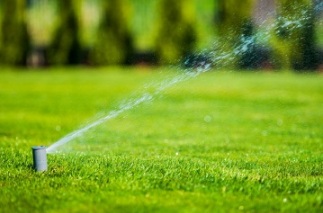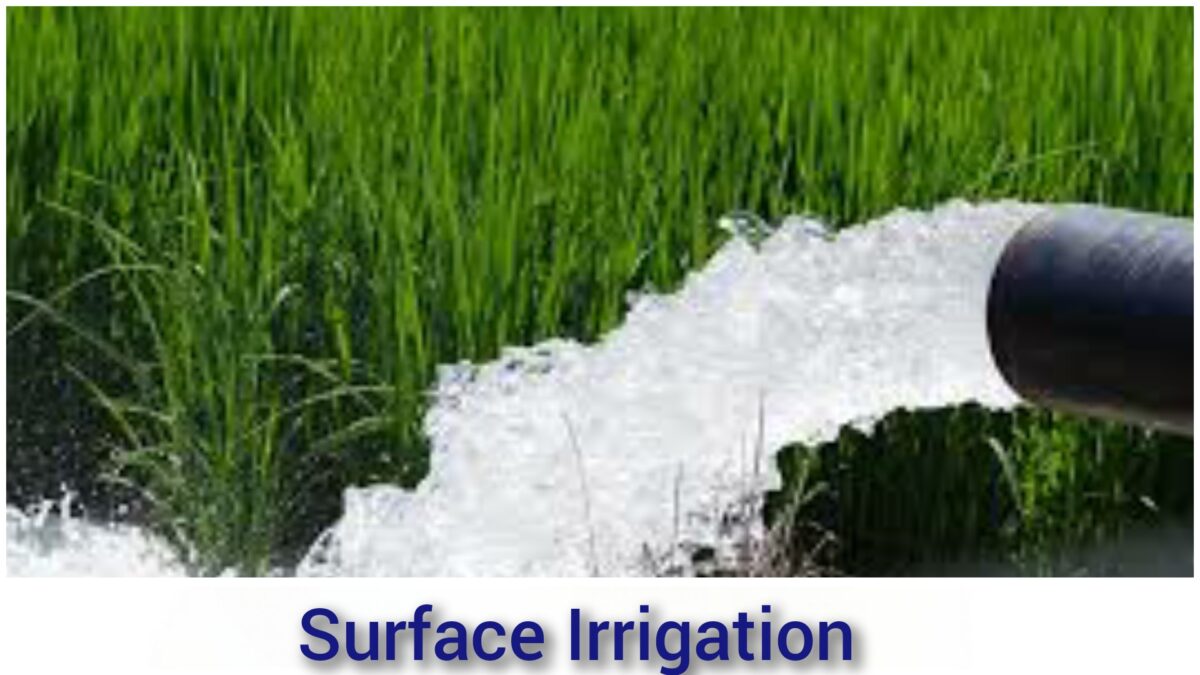Irrigation is a must for every crop to grow. In this article, we will learn about irrigation, methods used for irrigation, and the advantages of irrigation.
Let’s get started!
Table of Contents
Irrigation Definition:
The science or application of water to the land for helping the crop growth according to the crop requirement via channels is called Irrigation.

What are the methods used for Irrigation?
There are two types of irrigation as follows:
- Surface Irrigation
- Subsurface Irrigation
Let us discuss these two types of irrigation.
1. Surface Irrigation:

It involves the flowing of water by gravity above the soil. The water is usually supplied from the water source with the help of pipes and canals. It is mainly used for pasture and field crops. The efficiency of surface irrigation is about 50-700%.
It can further be classified into two parts:
(a) Flow irrigation: When the water is present at a higher level and supplied at a lower level by the action of gravity then it is known as flow irrigation.
It can be divided into two types:
Perennial irrigation: In this type of irrigation the water is supplied by the canal distribution system.
Flood irrigation: It is also known as inundation irrigation. The soil is kept submerged and flooded with water.
(b) Lift irrigation: When the water is supplied using any mechanical device like pumps etc, then it is known as lift irrigation.
2. Sub-surface irrigation:

This type of irrigation does not wet the soil. The plants are nourished by underground water through the capillary action.
It is divided into two parts:
(a) Natural sub-irrigation: When the water leaked from channels enters the ground and helps in raising the water table, which helps in irrigation the crops by capillary action before it is known as natural sub-irrigation.
(b) Artificial sub-irrigation: When a system of open joined drains is artificially laid beneath the soil for the supply of water to the crops by capillary action then it is known as artificial sub-irrigation.
What are the advantage of Irrigation?
Following are the advantage of irrigation:
- Increase in food production.
- Optimum utilization of water.
- Afforestation etc.
What are the disadvantages of Irrigation?
Following are the disadvantages of irrigation:
- Irrigation contributes to water pollution since the fertilizers get dissolved in water.
- Over irrigation leads to waterlogging.
- Buying and supply of irrigation water is a complex and expensive task.
What are some techniques for water distribution on the farm?
Following are the water distribution techniques:
- Free Flooding – In this method, ditches are excavated in the field, and water from these ditches is allowed to flow. After the water leaves the ditches, no attempt is made to control the flow. Since the flow of water is not restricted, it is also called wild flooding.
- Check to flood – It is similar to ordinary flooding. The only difference is that the water is controlled by surrounding the check area with low and flat levees.
- Furrow irrigation – In this method, only one-fifth to one-half of the land surface is wetted with water.
- Drip Irrigation – In this method, water is slowly and directly applied to the root zone of the plants, resulting in minimizing the losses by evaporation and percolation.
- Border flooding – In this method, the land is divided into a number of strips and each strip area is of the order of 10-20 meters in width and 100-400 meters in length. When the advancing water reaches the lower end of the strip, the supply of water to the strip is stopped.
- Basin Flooding – It is a special type of check flooding and is adopted specially for orchard trees which are generally placed in the basin, and then the surface is flooded in check flooding method by ditch water.
- Sprinkler irrigation – In this method, water is supplied to the soil in the form of a spray through a network of pipes and pumps which acts as an artificial rain.
Conclusion:
I hope you have enjoyed my article on irrigation. You can check out some other articles on irrigation as listed below:
Faqs
Surface, sprinkler, drip, and subsurface.
It increases crop yields and reduces the risk of crop failure due to drought.
Leaks, clogs, uneven water distribution.
Use water-efficient methods, time irrigation to coincide with plant needs, and monitor soil moisture levels.
